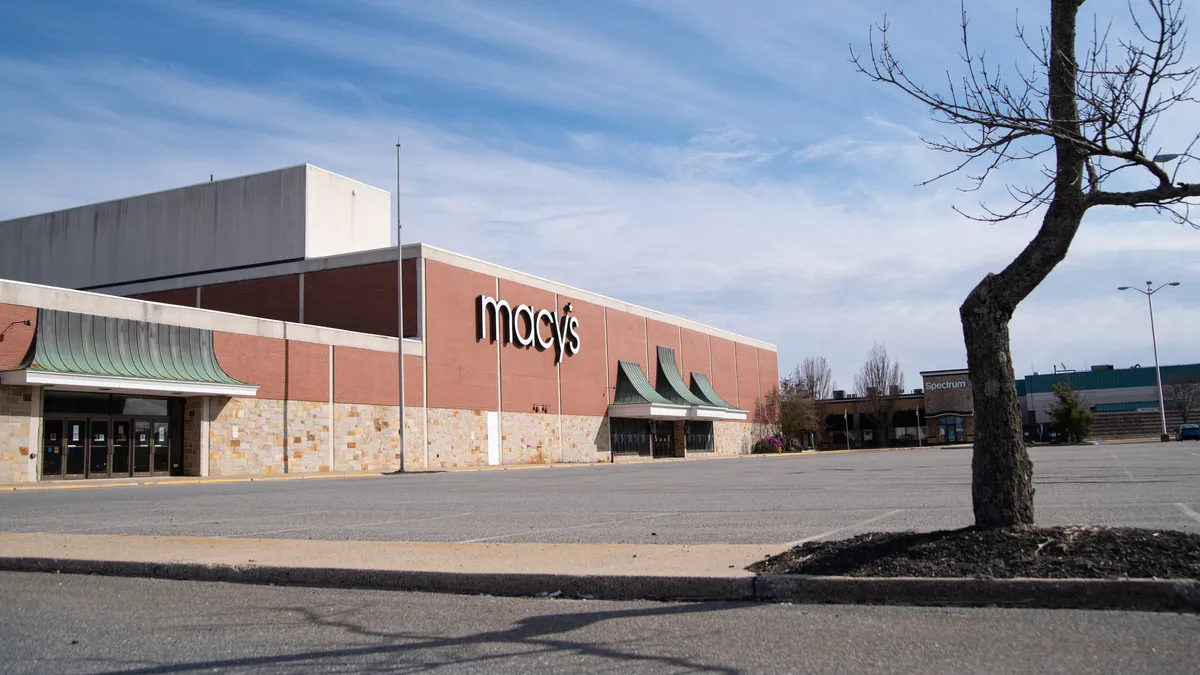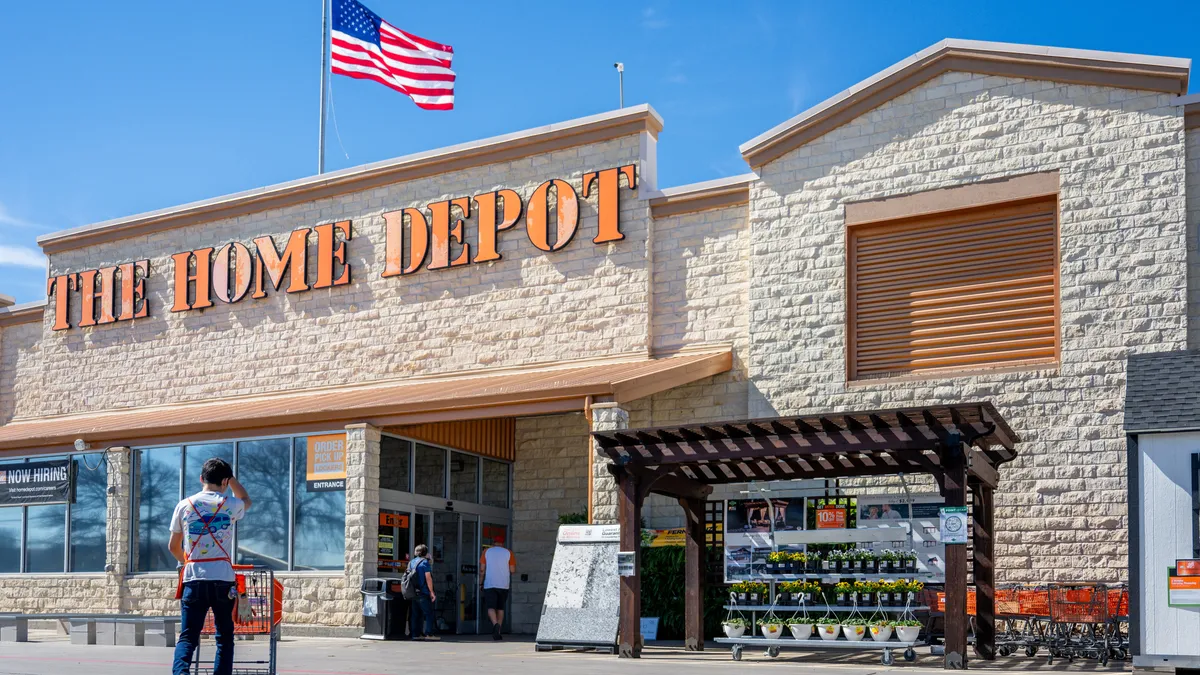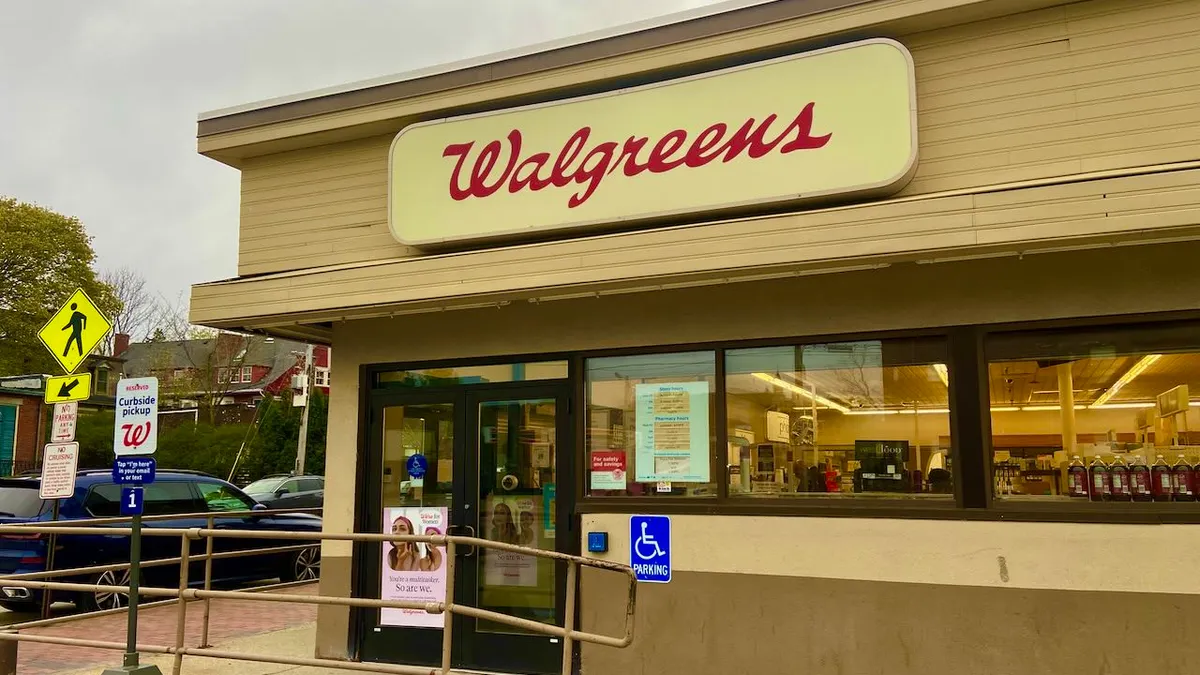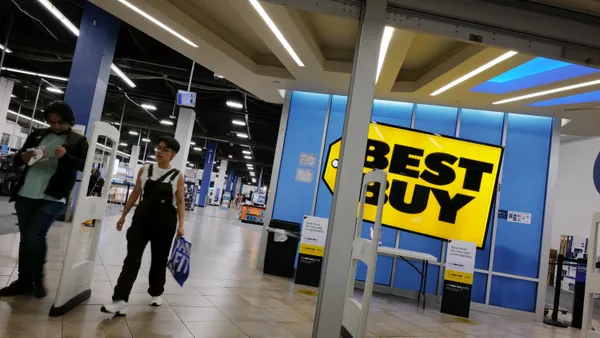When department stores took their cavernous stores with their varied assortments, savvy buyers and attentive associates to the mall decades ago, it was a win-win. The retailers could more easily reach all the customers who were filling up the suburbs, and the malls could chase that footfall up and down their corridors and into their smaller inline specialty tenants.
These days, it's more of a no-win situation.
The question is, have malls chased away the anchors that once flocked to them, or have department stores disappointed as anchors?
Lose-lose
Certainly, malls are not winning. In the third quarter, mall vacancies reached a 20-plus-year high, rising 0.3% in the quarter to 10.1%, according to an emailed report from Moody's Reis. Indeed, malls are losing, at a steady clip, their department store anchors.
Green Street Advisors analysts in April said they expect a little more than half of all mall-based department stores to close by the end of next year. That in turn triggers clauses in inline tenant, or non-anchor, leases that allow for an easy exit or an unscheduled renegotiation of rent. The pandemic has played a part in this, but it has merely concentrated into a couple of years what would have played out anyway in five to 10, according to Green Street.
The inline effect can already be seen. Gap Inc. last year cited declining traffic as its reason for fleeing the mall, for example, and this year executives said that 350 Gap and Banana Republic stores would close, mostly at malls. The company aims to have some 80% of its physical stores at strip centers instead.
The momentum continues. Department stores are increasingly distancing themselves from malls, literally and rhetorically. In Nordstrom's case, executives have recently emphasized that they're not so much of a mall retailer anymore. This year the retailer said it would close 16 full-line stores, and, shortly after, CEO Erik Nordstrom noted that the company's mall stores delivered just 38% of its revenue last year.
"As retail continues to evolve, our flexible model supports a continued shift from what was predominantly a mall-based business toward a more diversified model that includes digital and off-price," he also told analysts, according to a Motley Fool conference call transcript.
Up in the air
Retailers aren't just shrinking their fleets. Many, like Gap, are also moving into open-air and strip-style shopping centers, including those where you might also find a Target, and where parking is easier.
Dillard's, J.C. Penney, Kohl's and Belk are examples of retailers in the segment finding success in what is a smaller, lower-cost arrangement, according to Kenneth Lamy, CEO of financial management firm Lamy Group, who has been working with landlords in forging pandemic-related rent relief.
"I don't think they have a choice — it's more convenient for customers, and closer to them," Lamy said by phone. "A trip to the mall is not as convenient. The strong ones will be fine and the ones that have been weak in their offering at their anchor stores, that property destination is just not as attractive. The consumer is over here, far away from you, and you have to bridge that separation."
Analytics backs up the idea that consumers are more likely to shop away from the mall. From the end of July through the end of August, more people have headed to Kohl's stores, or more often, than to Macy's, according to Placer.ai data. "The brand has seen visits recover much faster than Macy's and there is little doubt that the outdoor orientation has helped," according to a report from Placer.ai Vice President of Marketing Ethan Chernofsky.
Where's the magic of Macy's?
While any anchor closing is a blow to a mall, Macy's, which runs nearly 550 namesake stores and 56 Bloomingdale's locations, has an outsized influence on the format's decline.
"The biggest problem for landlords today is not necessarily Macy's, it's the pandemic," Rudolph Milian, CEO of Woodcliff Realty Advisors, said by phone. "The answer has been to bring in more fitness centers, restaurants and all the kinds of tenants that could pay more rent than department stores, but now with the pandemic everyone is in trouble. But they have been a problem and they're in practically every single mall."
Perhaps not for long. As part of a turnaround unveiled in February, Macy's executives said they would close 125 more stores in the next three years and move some stores to open air centers, a plan that could further devastate the traditional malls where most of those stores sit.
Whether the open air malls will work for Macy's is an open question.
"Macy's moving to an open air mall — that surely cannot be the big idea."

Richard Rubin
Founder, Repvblik
"[T]he assumption that this is a cure-all is misguided," Chernofsky said, calling Kohl's value proposition a key advantage. "And this is seemingly not the direction that Macy's plans to take. Instead, its plan is to shift upmarket to grab market share left available by high-end closings from Barney's, Lord & Taylor, and others."
Whatever the plan, the convenience of the open-air centers may not be enough to draw customers back to Macy's, according to Richard Rubin, founder of commercial property adaptive reuse firm Repvblik, which turns failed developments like fallen malls into affordable housing.
"Macy's moving to an open-air mall — that surely cannot be the big idea," Rubin said by phone, adding that Kohl's is likely getting foot traffic thanks to its Amazon return policy and it's probably not translating to many sales. "I've been to Kohl's twice recently, both times to return an Amazon delivery, and the Amazon queue was almost out the store. Same thing with Sears, which stripped out all of their real estate into [property REIT] Seritage — Sears had become a dinosaur. What possibly is Macy's going to have that you can't get online?"
Macy's move remains in pilot mode as it tests the idea. Mark Cohen, director of retail studies at Columbia University's Graduate School of Business, doubts it will scale or be effective.
"As for the movement to strip centers, who is Macy's kidding?" he said by email. "This strategy, if ever acted upon (which it won't) solves none of Macy's underlying problems. This is a fig leaf at best."
The vicious spiral
Decades ago, indoor malls gave department stores access to a thriving suburban middle class — consumers who today are likely to be pressed for both time and money, which could explain the desire for more convenient shopping and better value, both on and offline.
Several malls have also lost their luster, making the relative inconvenience of shopping there that much less appealing. And there are too many of them in many areas, diluting their ability to drive meaningful traffic, according to Lamy, who said there's evidence that now open-air strip centers are also getting oversaturated in some areas.
"In the 70's, 80's, 90's and early 2000's, people kept building these monster properties. The market could support one or maybe one-point-something, but they built three," Lamy said. "The United States has overbuilt retail by multiple levels compared to any other country in the world. Back in the Great Recession we started the contraction of the mall business, and the right-sizing is just accelerating."
"The United States has overbuilt retail by multiple levels compared to any other country in the world."

Kenneth Lamy
CEO, Lamy Group
Meanwhile, those varied assortments that gave "department" stores their name have shrunk to mostly apparel, a phenomenon that Green Street cited as a vulnerability. Sales of home goods, beauty, electronics and other categories that once sent people to department stores have shifted to big-box and specialty retailers, Lamy and others noted.
Macy's in particular removed a key reason for customers to head to the mall when it took over several local department store banners early this century. In the process of converting them all to Macy's, the company centralized buying, marketing and other operations, stripping those locations of the individuality of branding and merchandising that had engendered loyalty for years, according to Milian.
The "world's largest store," as Macy's calls itself, has also neglected most of its mall-based locations in the past 30 years, according to Cohen.
"Maybe they are both doing each other in," he said. "In my opinion, however, Macy's longstanding chronically poor performance has done more harm to the malls it resides in than the other way around. Shabby stores, diffident service, poorly crafted assortments all add up to a department store anchor that has been an albatross around malls' necks who have historically looked to Macy's to drive traffic through their doors."






















